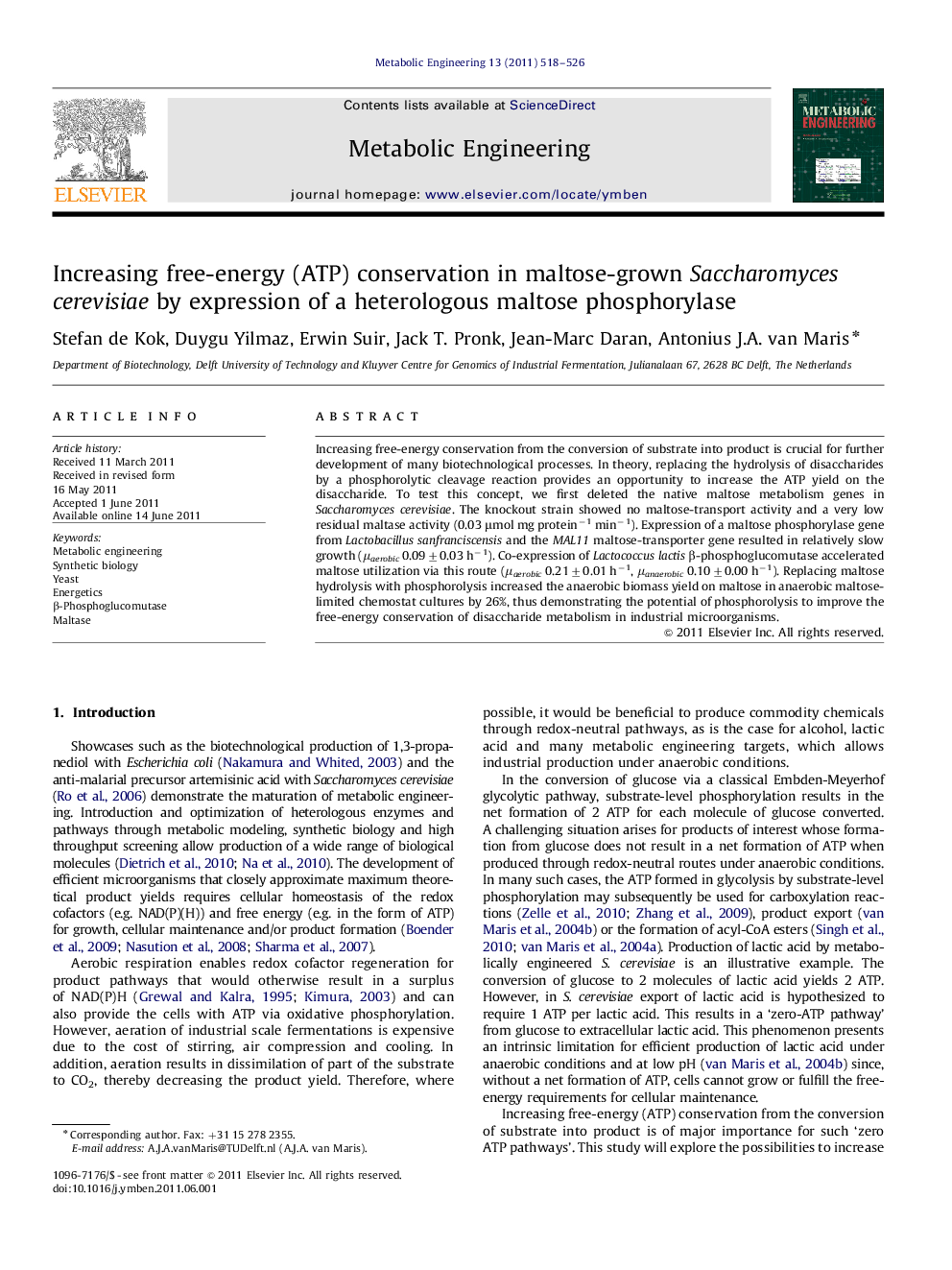| Article ID | Journal | Published Year | Pages | File Type |
|---|---|---|---|---|
| 31611 | Metabolic Engineering | 2011 | 9 Pages |
Increasing free-energy conservation from the conversion of substrate into product is crucial for further development of many biotechnological processes. In theory, replacing the hydrolysis of disaccharides by a phosphorolytic cleavage reaction provides an opportunity to increase the ATP yield on the disaccharide. To test this concept, we first deleted the native maltose metabolism genes in Saccharomyces cerevisiae. The knockout strain showed no maltose-transport activity and a very low residual maltase activity (0.03 μmol mg protein−1 min−1). Expression of a maltose phosphorylase gene from Lactobacillus sanfranciscensis and the MAL11 maltose-transporter gene resulted in relatively slow growth (μaerobic 0.09±0.03 h−1). Co-expression of Lactococcus lactis β-phosphoglucomutase accelerated maltose utilization via this route (μaerobic 0.21±0.01 h−1, μanaerobic 0.10±0.00 h−1). Replacing maltose hydrolysis with phosphorolysis increased the anaerobic biomass yield on maltose in anaerobic maltose-limited chemostat cultures by 26%, thus demonstrating the potential of phosphorolysis to improve the free-energy conservation of disaccharide metabolism in industrial microorganisms.
► Phosphorolytic cleavage of disaccharides can increase the ATP yield in yeast. ► All maltose-transporter and maltase genes in S. cerevisiae were deleted. ► Yeast maltase was functionally replaced by bacterial maltose phosphorylase. ► β-Phosphoglucomutase activity is essential for efficient maltose phosphorolysis. ► Maltose phosphorolysis in yeast increases the anaerobic biomass yield on maltose.
